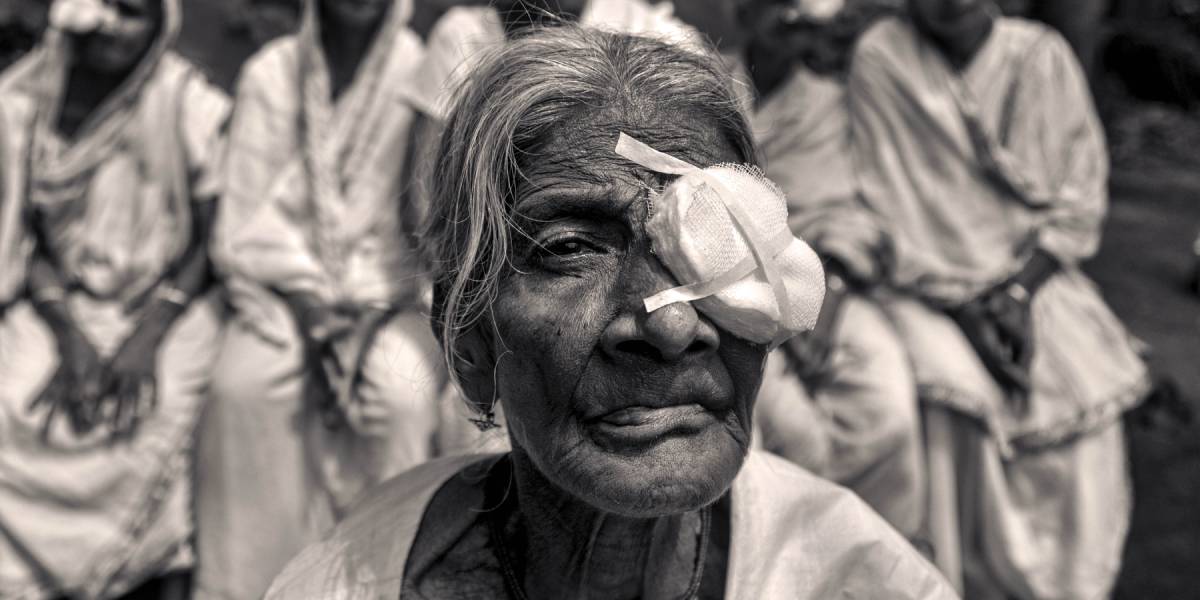While cataract prevalence is higher among Indian women, men undergoing cataract surgeries tend to spend about 10 percent more than women.
Published Jan 22, 2025 | 7:00 AM ⚊ Updated Jan 22, 2025 | 7:00 AM

(Creative Commons)
Cataract, a medical condition where the eye’s clear lens becomes cloudy, impairing vision, affects approximately 15 percent of India’s population. Earlier studies have shown that Indian women are 35 percent more likely to develop cataracts than men.
However, a recent study published in The Lancet has revealed an intriguing trend: while cataract prevalence is higher among women, men undergoing cataract surgeries tend to spend about 10 percent more than women.
This discrepancy is linked to men’s preference for costlier intraocular lenses (IOLs) – artificial lenses used to replace the eye’s natural lens during cataract surgery.
The study, conducted by researchers at Aravind Eye Hospital, analysed data from the Aravind Eye Care System, which performs 40–50 percent of Tamil Nadu’s cataract surgeries and a smaller share in Andhra Pradesh. The research covered surgeries performed over a 12-year period, from 2012 to 2023, during which the number of procedures grew at a compound annual growth rate (CAGR) of 5.4 percent.
The study data found that women underwent 55 percent of the 36 lakh surgeries, yet their preoperative vision was poorer than men’s, despite presenting for surgery at a younger average age (60.3 years vs. 62.4 years for men).
Men paid approximately 10 percent more for surgeries, largely due to a preference for premium intraocular lenses (IOLs), the artificial lenses replacing the natural lens during cataract surgery.
“We found a persistent sex gap in spending per cataract surgery of about 8–10 percent lower spending on females relative to male patients, with a small decline in the gap over time. To our knowledge this finding has not been reported previously in the context of cataract surgery, although it is consistent with previous literature that in India health care expenditures per capita for adult females are lower than adult males, regardless of type of disease and for all socio-economic groups,” said the authors of the study.
They also added that since at Aravind all paying patients are offered the same price regardless of sex, “[the] price difference is largely due to differences in male versus female patients’ choices of IOLs.”
Despite paying less on average, more women were left to pay entirely out-of-pocket compared to men. In 2012, 93 percent of surgeries on women were self-paid compared to 89.7 percent for men. By 2023, these numbers fell to 73.9 percent for women and 68.7 percent for men, but the gap widened slightly, showing women continued to have less financial support.
Indian women are 35 percent more likely to experience blindness than men, driven by gender disparity and potential biological factors, according to a study published in the British Journal of Ophthalmology.
The study revealed that women face a 69 percent higher risk of developing cataracts compared to men. Researchers from the All India Institute of Medical Sciences (AIIMS), New Delhi, conducted a meta-analysis of 22 studies focusing on blindness and cataract surgical coverage (CSC), a key metric for evaluating the impact of cataract treatment programs.
The findings highlighted the critical role of gender in both blindness (35 percent) and cataract-related blindness (33 percent). Despite this, only 27 percent of women undergo cataract surgery compared to men, a significant disparity attributed to lower CSC rates among women.
The researchers identified several barriers to women accessing cataract surgeries. Traditionally, women had limited access to healthcare services, partly because cataract surgeries often require travel outside their villages – a step many women are unable to take due to familial responsibilities and societal constraints. Additionally, the study found that surgeries were often prioritised for men, who are typically viewed as primary earners within families.
The study also found that Manual Small Incision Cataract Surgery (MSICS) accounted for 64.9 percent of cataract surgeries, while the more advanced but costlier phacoemulsification (PE) made up 35.1 percent of the procedures.
Over time, out-of-pocket payments for cataract surgery have decreased, with government and insurance support covering 28.7 percent of surgeries by 2023.
However, women were found to be more likely to pay entirely out-of-pocket than men, pointing to a significant gender disparity in accessing financial assistance.
The study also highlighted that female patients typically presented for cataract surgery at younger ages than male patients, which could indicate an earlier onset of the condition.
However, women often had poorer vision at the time of presentation, which could be partly due to their higher rates of cataract incidence and prevalence in India. Furthermore, women tend to have lower uptake of eye care services, which may delay their diagnosis and treatment.
“Thus, even though female patients presented for surgery at a younger age than male patients, suggesting possible earlier onset, their vision at presentation was worse. The poorer vision at presentation may be explained in part by previous studies that females have higher rates of incidence and prevalence of cataract in India, and lower uptake of eyecare services,” the authors noted.
The study observed that younger patients under the age of 50 often had worse vision at presentation compared to older individuals. Potential reasons include work or life commitments delaying surgery, fear of early operation, lack of awareness about cataract treatability, and unilateral cataracts or trauma-induced cataracts.
“At the same time, there are continuing inequities faced by female patients in both presentation for treatment with worse vision than male patients, and in receiving lower expenditures for surgery. This indicates the need for targeted approaches to address sex inequities, both on the demand generation and treatment provision sides, in line with the WHO’s recommendation that countries should place focus on improving access and affordability of eyecare in traditionally underserved populations,” the authors noted.
(Edited by Dese Gowda)
